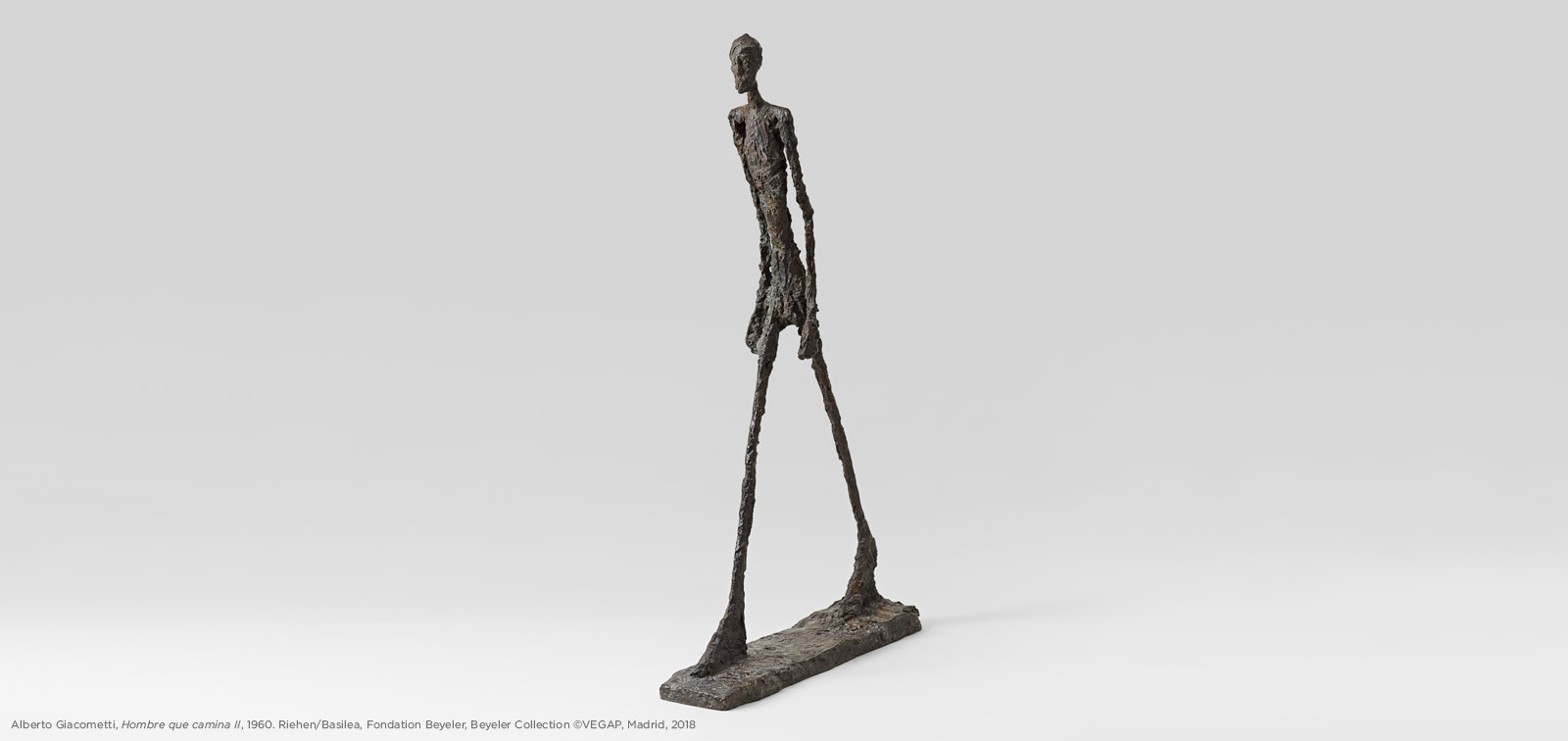

When I entered the Prado Museum to see the contemporary Giacometti exhibition, I felt echoes of the exhibition in Paris, the Autumn Salle 1905, that launched the Fauvist movement, nicknamed by art critic Louis Vauxcelles as “Donatello among the beasts”- referring to those new bold paintings full of challenging colours placed near a classical Renaissance sculpture of Donatello.
“The beasts among the masters”, I thought. This time, the elongated beasts referring to Giacometti’s breaking style. It took one century for Donatello to have his vengeance at last and some decades for Giacometti to finally visit the Prado, something he always longed for in life and that inexplicably he did not do, though he could see many of the paintings when they were sent for protection to the Nation Society in Geneva during the Civil War in 1936.
There has not been a better place to exhibit his slim figures than in the long corridors and parlours of the museum surrounded by the masterpieces of Titian – whom Giacometti worshipped, Rubens, Velazquez, Mengs, El Greco, Zurbaran, Goya … . The contrast is strong. What a change in art and mentality between them. What a change in times. Giacometti who admired the masters and took up their legacy would have been very happy to see his works among them.
I realize that it is an extremely interesting way of curating, to exhibit contemporary art among classical pieces or to place the new artwork next to the old one that inspired the artist. I have already seen it done twice: in the Francis Bacon retrospective at the Guggenheim Museum in Bilbao in January 2017 and also in the current iconic fashion designer Balenciaga exhibition at the Thyssen-Bornemisza Museum in Madrid. This way of exhibiting makes you think not only of the value and the scent of the piece of art itself but also of the evolution of art and humanity. It brings together art, history and philosophy.
“The Walking Man” and the “Women of Venice” in la Piazza, surrounded by Velazquez masterpieces, watched closely by the “Meninas” and other Royal characters were in an awkward interaction between them and with the public, seeming to remind us that we are all human in spite of our differences. “The Chariot” in front of Titian’s
“Charles V, the Battle of Mühlberg”. War to war. Giacometti’s busts in conversation with the Romans busts. An impossible leg next to the bare leg of Christ in Zurbaran´s “Crucifixion with Saint Luke”. The most elongated piece placed in “The Greco” Salle, like saying “I can go further than you”. Congratulations to the curator, to the Museum and to everybody who had a part in this. It was impressive.
Art historians and critics said that the Fauvists- the beasts – wanted to go back to the primitive forms, to the dawn of art, and in that spirit Giacometti is a beast too, because his figures strongly resound with the primitive warriors and hunters painted in many caves around the world.
Susana Gómez Laín
Volume 34 no.2 November/December 2019 pp 23-24

